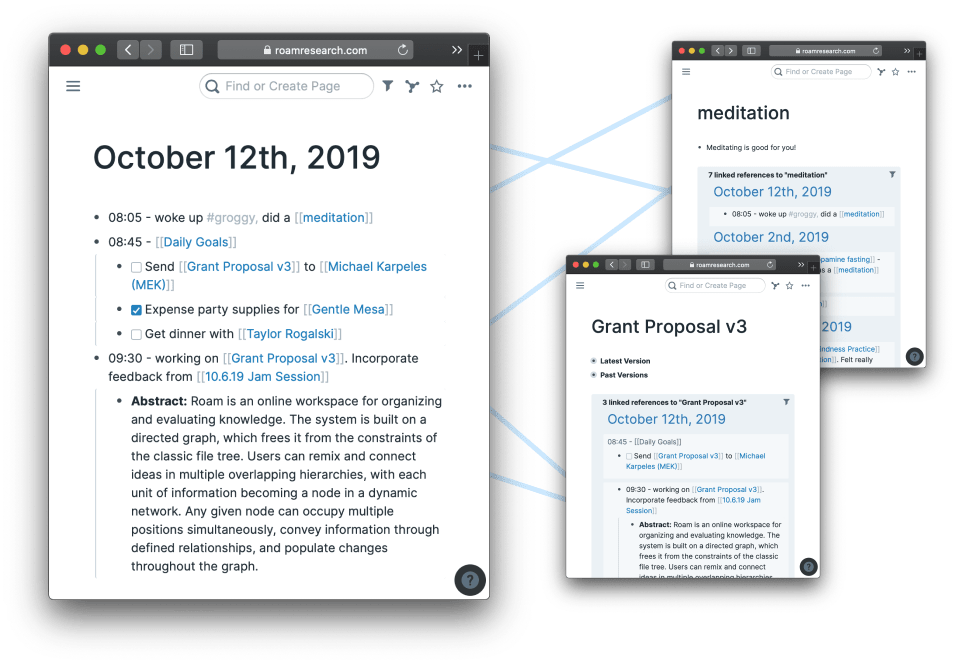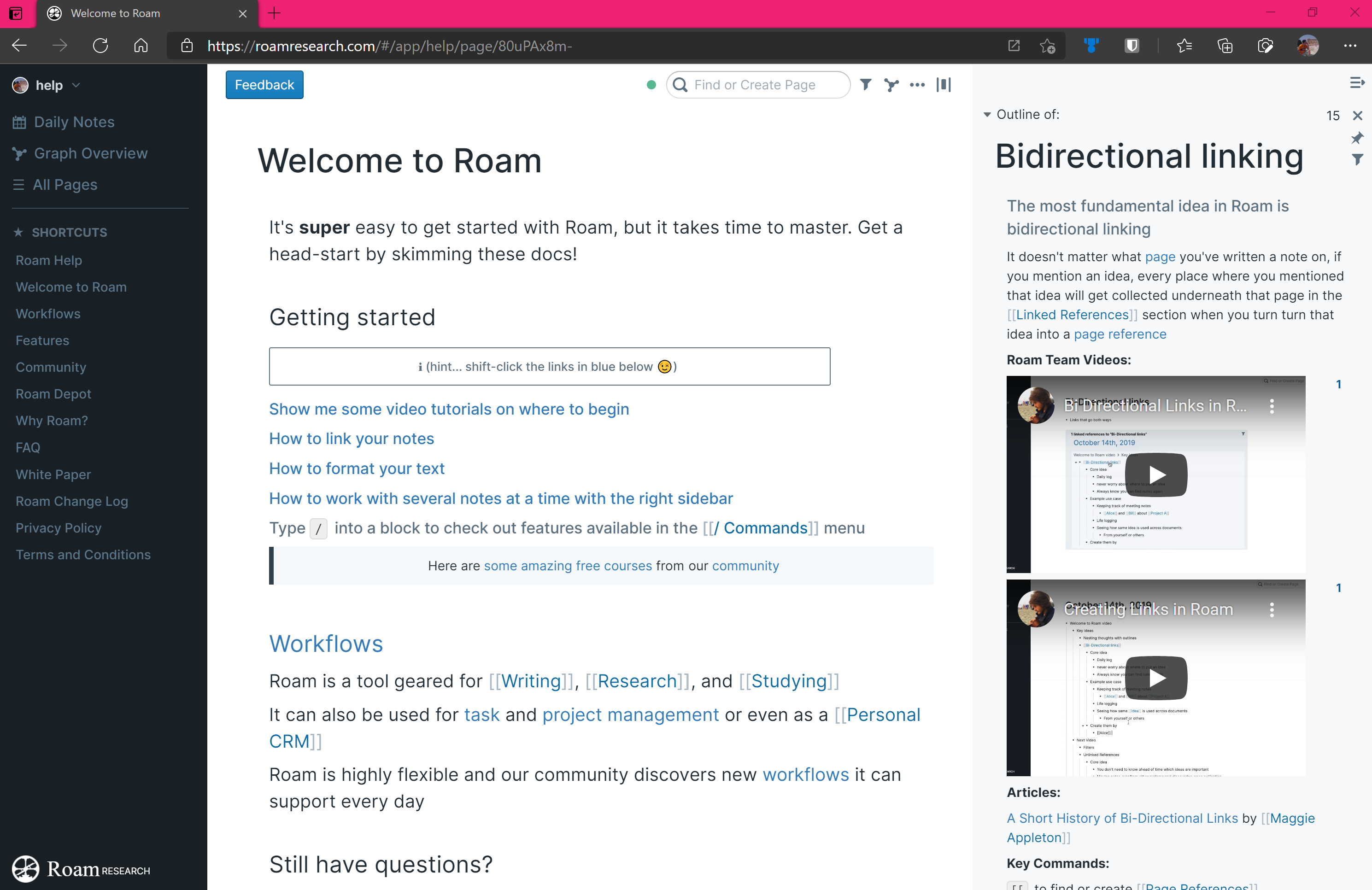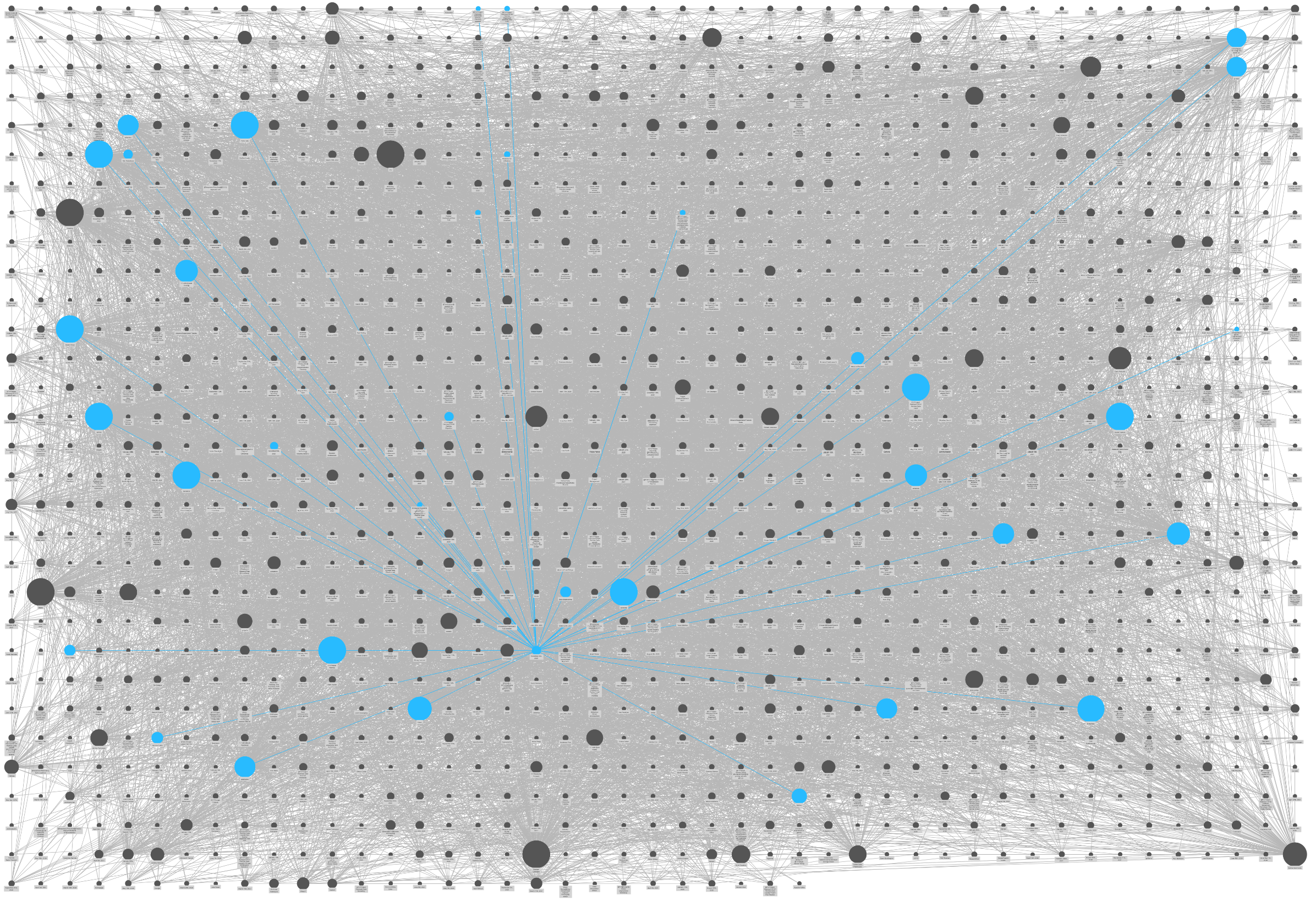Information Overload and the Second Brain

I joined my first Twitter Spaces uh….hangout…chat…thing…space(?) the other night, hosted by Stefan Natter, talking about Roam Research and how powerful a tool it is for unlocking all sorts of potential, and helping focus and creativity. One comment made by George Silverman of MindSkills echoed some thoughts of my own lately, about the sheer volume of information to which we’re exposed on a daily basis, and the mental capacity of our brains to process this.
Since the public emergence of the Internet only thirty-something years ago, the amount of information we process daily has increased exponentially, and shows no signs of slowing down. When you consider the pace of human evolution, taking hundreds and thousands of years to respond to environmental stimuli, are we currently in the midst of some Darwin-esque process of pushing the boundaries of our brains to see which ones survive and which break down? We have had only decades to adapt to this new information age, and it should perhaps be little wonder that there is such a rise in mental ill health, given all the extra processing our brains are doing, and all the additional stimuli for which we are simply not yet evolved to handle.
There’s a common suggestion (urban legend?) that we only use a small percentage of our brains, and there more capacity locked away in there. Whether this is true or not (I’m no neuroscientist), it has made me wonder whether at some point we will see the next evolutionary leap to allow humans to disseminate and process all this additional data? What I do know though, is that I often feel like I literally cannot process any more information after a day at work. I’m usually on a lot of calls, making lots of decisions and processing lots of info. By the end of it I feel like I can barely take in anything else.
There’s a well publicised story about Barack Obama and Mark Zuckerberg (not to mention many others) wearing the same outfit each day to combat decision fatigue. All of a sudden, this doesn’t sound like such a crazy idea. For me, I don’t own a wardrobe full of black (and slightly darker black) turtlenecks, so what do I do to try and help myself deal with this information overload?
As well as being the world's best secret agent, Archer knows a thing or two about dealing with decision fatigue.
All roads lead to Roam
My answer is Roam Research. There has been a rise over the past year or so of connected “second brain” applications. These are often characterised as note-taking or productivity apps, but these descriptions do them little justice. Roam and its ilk are a little like having your own personal Internet of You, into which you can sink all your notes, thoughts, ideas, and more, and link these together for recall exactly when you need them. I’ve done a little work with Graph Databases and understand the concept, so I very quickly had an inkling of the power this model could offer if there was a way to effectively define the nodes and their relationships.
This is one of the things that led me to Roam Research in the first place. I stumbled across it at a time when I was falling out of love with Google Keep. While I continue to love the simplicity of post-its for input, it was getting too hard to use for recall and I was having to constantly edit and recombine my notes. I was considering having a go of either Notion or Miro when I stumbled across Nat Eliason’s post on Roam and decided to give it a try.
Being familiar with use cases for graph databases, I understood the concept straight away and had an inkling it could work extremely well. I wasn’t quite prepared for just how well it would work. Since January 2020 I have sunk everything into it. Meeting notes, thoughts, ideas, feelings, inspirational quotes, and everything else. Yes, my graph is a bit of a mess, and I need to spend some time refining some proper process, but it’s amazing how even in some of that chaos (especially in the early days) I can look into something and all of a sudden see a reference from 9 months ago that sparks an idea.

There is a handy Roam help graph that is available to all users for any help with onboarding.
I’ve nowhere near perfected my workflow, but I can genuinely say Roam Research has been a game changer for me. I still retain a lot of the information I process, but I’m slowly adapting to worry less about it and rely on my Roam graph instead.
Roam wasn’t built in a day
It has been, I think, about a year since Roam turned on payments, meaning most users will need to pay $15/month beyond their 30 day trial. This may seem steep in comparison to some other systems, but there’s a strong value proposition behind that, and Roam’s team, led by the vision of Conor White-Sullivan have a feature-rich plan (I hesitate to say “roadmap” as they’re keen to stay open ended) and a fervent belief in not just Roam as a product, but the need for a whole new breed of tool that can act as a communal second brain and shake the foundations of the very Internet itself.
There are a few major omissions currently which the Roam team are working hard to not just release, but to make sure they absolutely nail the implementation:
- Mobile I/O is rather clunky and there’s no native app, relying on Progressive Web Apps (PWAs) running in the device browser as the closest thing currently avaialble. On the Twitter space I atteneded, George Silverman was talking about waking up in the middle of the night and sinking a few ideas into Roam. This is exactly the type of thing it should be great for, but it’s a long way away in its current guise from scrawling a few words on a notepad and going back to sleep.
- There’s also no API (yet). Despite this, there is a dedicated community already there featuring the likes of roamjs by David Vargas and RoamHacker. Roam has a clever extension system that allows any JavaScript code to be executed within Roam, so it’s possible to build pretty much anything you can think of. Naturally there are associated risks with this, so it’s best used within caution (a fact which is very well communicated before you even get to the point of executing any code). When the official API releases I think Roam is going to get huge, fast.
- Speaking of security, the lack of full end-to-end-encryption (E2EE) is a concern for some at present. Roam does allow creation of encrypted blocks, which provides some protection, but there is work to be done there. This is a mainly technical challenge though, rather than a contractual one. As Conor has highlighted on multiple occasions, with Roam’s long term goals to be more collaborative and multi-user focused, E2EE is not an easy problem to solve (multiple editors requiring access to specific blocks and sharing keys). The 5-year $500 believer plan allows users to create offline graphs which again, may help some of the more security conscious, but that also comes with its own risks.
- The Graph Overview, which provides the full visualisation of your graph is great early on. You can see individual nodes clearly and explore relationships. As this grows however, it becomes a big, zoomed out rectangle with very limited utility. One of the strengths of any graph visualisation is to be able to explore connections visually and jump from node to node, discovering unexpected connections. This is an are Roam could really improve, or perhaps this will be solved by plugins once the official API makes an appearance. I’d imagine there are plenty of people out there who have skills in this area.

The Graph Overview isn't as useful as it could be currently, but it gives a great idea of the scale of a well-used Roam graph.
Despite the lack of these what some would call “key features”, Roam has had an incredibly strong start, and the leadership certainly has a vision towards which they are working.
When in Roam…
It’s odd to see a tool with such potential for so many use cases that a lot of people just don’t “get”. It’s not a question of intelligence or “vision” - Roam is bare bones. You get out what you put in, and it’s not immediately apparent “what” to put in. It’s a sea of emptiness with only your Daily Notes page waiting for you to start typing. The free form nature of it could drive some people insane, like staring into the void. As soon as you start typing, and adding ideas, and linking blocks and pages, you can see it taking shape. There’s definitely a “Eureka!” moment when you first discover a previously unconnected connection, and I think this is the part Roam could do more to help new users discover. It’s just in need of a little more work with the onboarding to help its power become more apparent.
In terms of combating information overload and helping organise my thoughts, Roam has been an absolute revelation and it’s not hard to see how a new class of tool could be emerging here. It’s not always the input of information that’s the issue, it’s the organisation and retrieval that is problematic. Hierarchies take maintenance. Search requires accuracy. The second brain? It just needs to connect two dots.